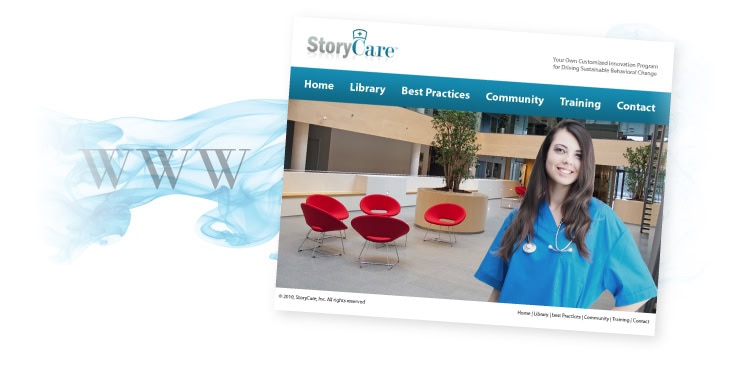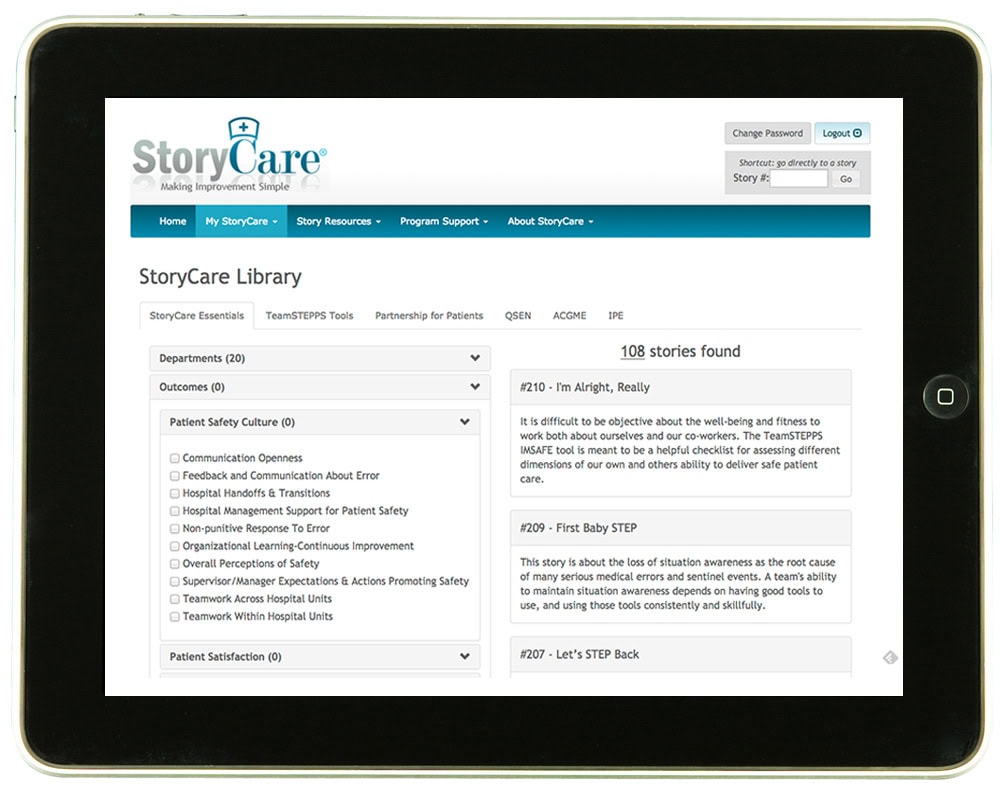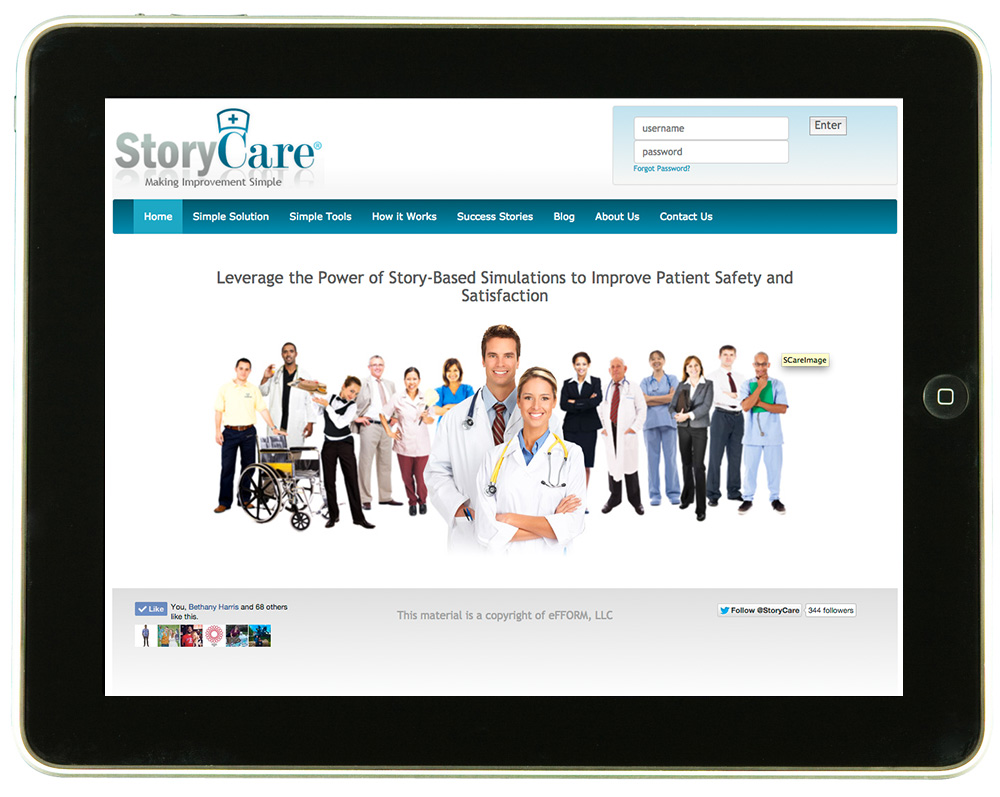An Easy Interface to Manage Content
StoryCare makes use of the latest standards used in universally accepted online solutions to conform with any institution’s IT standard. Moreover, the website is designed to be responsive, meaning that users can access the site using any platform, from a computer, to a tablet, to a smart phone. All media is streamed from the web thereby not requiring any special software.

The StoryCare Library
The StoryCare Library is designed to make it easy for users to search for story solutions by department, outcome category—Patient Safety Culture, Patient Satisfactions, Hospital Acquired Conditions, Quality of Care, Staff Satisfaction and Professional Development, and Teamwork and Communication, TeamSTEPPS®, Infectious Diseases, and QSEN. The user is then provided an array of story solutions ranked to address their particular challenge, and all of the support materials to ensure their success.

The development of our library of story solutions is guided by professionals in the field to ensure that each story is both relevant and accurate to the concerns of healthcare professionals, and to optimize learning and a commitment to experimentation, innovation, and improvement. This collection of transformational narratives is informed by our team’s collection of stories from over 1,000 patients, family members, and healthcare professionals through our extensive corporate healthcare improvement experience.
All the Tools Needed to Ensure Team Success
The site also provides the user support, resources, and a number of powerful tools to achieve success, such as guidelines for observing and assessing change, a library of best practices related to the range of outcomes team leaders are seeking, a variety of communication tools to keep the team’s goals front and central, and a personal vault to store story selections for future use.










 StoryCare is very easy to implement. While it was designed to take just a few minutes of your staff’s time each week with very little preparation on your part, don’t let its simplicity lead you to think (or leave you with the impression) that it’s not also a powerful change tool. In fact, the fundamentals of StoryCare draw on cultural traditions going back thousands of years. From the beginning of human history people have been using storytelling to teach and engage each other with important ideas crucial to survival. Contemporary science has confirmed what ancient people intuitively understood—we are all wired for story. In fact, extensive research in the educational field and the social sciences has found that when coupled with reflection, there may be no more powerful ‘springboard’ for changing behavior than storytelling.
StoryCare is very easy to implement. While it was designed to take just a few minutes of your staff’s time each week with very little preparation on your part, don’t let its simplicity lead you to think (or leave you with the impression) that it’s not also a powerful change tool. In fact, the fundamentals of StoryCare draw on cultural traditions going back thousands of years. From the beginning of human history people have been using storytelling to teach and engage each other with important ideas crucial to survival. Contemporary science has confirmed what ancient people intuitively understood—we are all wired for story. In fact, extensive research in the educational field and the social sciences has found that when coupled with reflection, there may be no more powerful ‘springboard’ for changing behavior than storytelling. One of the biggest challenges a team leader can face is keeping your team focused on the fundamentals of caring for your patients and their family members while ensuring their safety and satisfaction. StoryCare was created to help you and your team to maintain that focus on ‘getting it right’ with every patient, every day.
One of the biggest challenges a team leader can face is keeping your team focused on the fundamentals of caring for your patients and their family members while ensuring their safety and satisfaction. StoryCare was created to help you and your team to maintain that focus on ‘getting it right’ with every patient, every day.


 What topics or story ideas should be added to StoryCare that could assist you?
What topics or story ideas should be added to StoryCare that could assist you? During StoryCare’s 4-week improvement cycle, staff will be experimenting with new ideas that demonstrate the desired behaviors identified in the Transformation Story and subsequent group discussion. Each Transformation Story has specific reflective questions in the Discussion Guide and the Story Handout. Participating unit StoryCare leaders have a dual role in both encouraging staff to innovate new ideas as well as documenting/implementing ones that show promise.
During StoryCare’s 4-week improvement cycle, staff will be experimenting with new ideas that demonstrate the desired behaviors identified in the Transformation Story and subsequent group discussion. Each Transformation Story has specific reflective questions in the Discussion Guide and the Story Handout. Participating unit StoryCare leaders have a dual role in both encouraging staff to innovate new ideas as well as documenting/implementing ones that show promise.